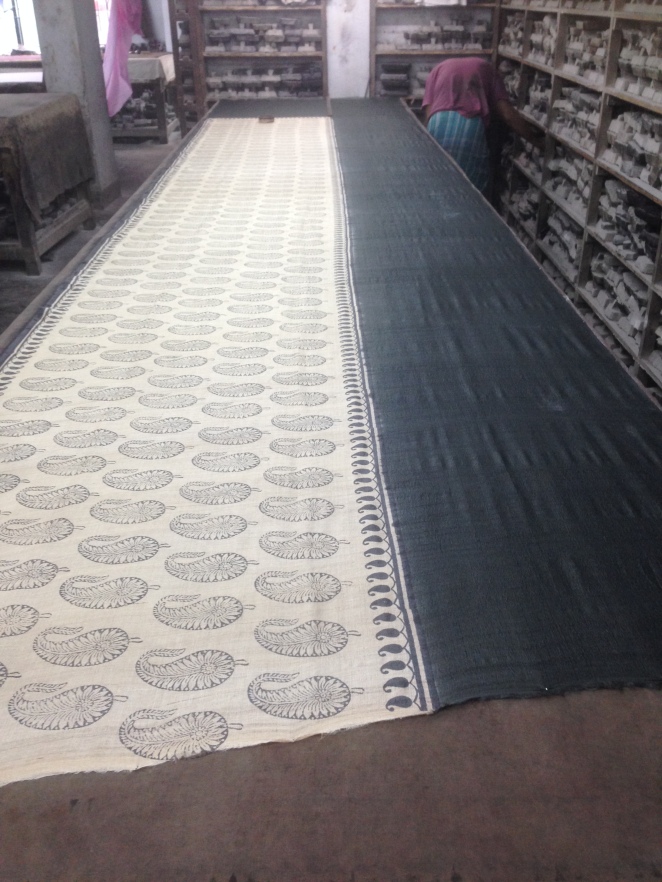I decided to spend the first half of my last day in Kolkata in Kumartuly. For those of you who have been, or know of this place, you can imagine the face of amazement that I wore throughout my time there. Kumartuly, some twelve kilometres outside the centre of the city is an area where artisans and primarily sculptors reside and work. They make the murthis dispayed at pandals during the various festivals, and of course their busiest time is the months leading up to Durga Puja.
Even though I was there in March there were still a countless number of artisans working, preparing sculptures for Shivratri. While our “guide” seemed less than enthused by the apparently lame turn out, I was way too excited. Perhaps it wasn’t as lively and bustling as during another season but everywhere I looked there were sculptures in various phases of completion, some even up to ten feet high lying around everywhere, being worked upon. It was also interesting to note that all the sculptors happened to be men when I was there, and the only woman I saw working outside of household chores was painting the embellishments.
Clay sculptures are made around frames constructed of hay and held in shape with thread. The frame is made to hold the shape of the human body in its simplest form. The addition of clay allows the sculptor to make the body fuller and to add additional shape and detail. The palms, feet, and any additional embellishments such as jewellery, hair, etc. are all added later on, once the frame is complete. These embellishments are often made using moulds of plastic or PVC that are designed and often constructed by the sculptors themselves. Once dry and hard the sculptures are painted and dressed up.
Alongside the sculptors stores are the stores who create the elaborate costumes and embellishments draped over the murthis. One of the artisans had me sit down near his bench and taught me how to make my own designs.
I didn’t get much time here (ok, I had three hours but it didn’t feel like enough time), but I enjoyed the experience so much.
I say some resemblance in the facial features of humans and animals on the murtis to the styles of Kalighat paintings. I found this to be very interesting but am not sure how true this is. And even if true I do not know how intentional this is. Several of the artisans do sculpt from reference of images (from posters) of gods and goddesses. So it is possible that their point of reference at some point was Kalighat artwork. However, I saw no proof of this.
Following the long ride home from Kumartuly, during which I passed out, I was so tuckered, we headed to the Sikkim House of Commerce. This gated guest house property is home to a restaurant that serves up momos with an amazing hot momo sauce. This sauce had my lip a little swollen by the last bite but I regretted nothing. I apologize for having forgotten the actual name of this restaurant, but everyone who knows it, knows it as “Sikkim House” itself.
I then walked down towards Camac Street for an evening chaat outside Vardhaan Market. I indulged in some puchka and alu tikki chaat, followed by a kulhar of kala khatta soda (extra soda). Perhaps my Bangalore taste buds are not set to Kolkata but I’ve tasted better chaat.
To end the evening and my trip, on a sweet note we followed this up with a quick trip to Balaram Mullick & Radharam Mullick. This is one of the most well- known and best sweet shops in all of Calcutta. I’m not sure if it has several branches but the one I went to was around Ballygunge, quite close to the Birla Temple. March is the season for gur so we tried rasmalia (one of my all time favourite Indian sweets) but the ras was made of gur, and a nolen gurer souffle. The souffle was interestingly enough the best sweet I tried there. We also tried the misthi doi before calling it a night.























